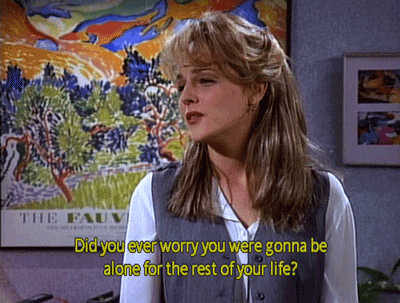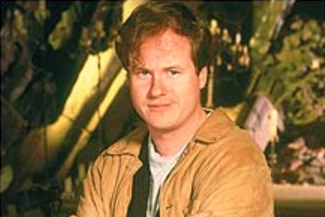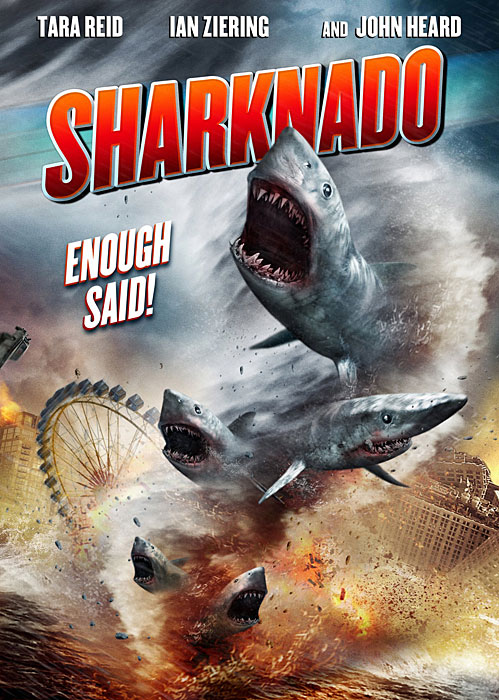‘Twister’ Revisited: The Universe Really Didn’t Want This Perfect Movie To Be Made
Today is Twister's 20th anniversary. Please pay your respects.

The perfect movie, Twister, turns 20 today.
If you haven’t seen it — you monster — it’s about a scientist, Dr. Jo Harding (Helen Hunt) who wants to get revenge on tornados for taking her father in a traumatic storm when she was little. Her vengeance comes in the form of science. By understanding why Mother Nature is chucking a tantrum, she can get people out of their destructive path and save lives by developing better warning systems. Take that, tornados!
Dr. Harding (Mad About You’s Helen Hunt, remember) is a storm chaser desperate to send her invention DOROTHY (see what they did there) up into a tornado to aid her research but the experiment is interrupted by her estranged husband, Bill ‘The Extreme’ Harding (Bill ‘Call My Character Bill’ Paxton), who shows up asking her to finally sign their divorce papers so he can marry Jami Gertz because she’s from The Lost Boys.
On the 20th anniversary of Twister, your first instinct may be to ask ‘what happened to Helen Hunt?’ Instead, it’s a time to appreciate how lucky we are to have the film at all. The universe sure as hell didn’t want it released on this day in 1996.
–
Both Everyone And No One Wanted To Write It
A treatment for Twister landed on a desk at Amblin Entertainment in 1992 and Steven Spielberg took a liking to it. Spielberg took it to author, Michael Crichton (fresh off the success of Jurassic Park), and asked for him to write the screenplay. Crichton and his wife, Anne-Marie Martin agreed to write it and spent the next few years crafting the story until Joss Whedon (Buffy the Vampire Slayer) was hired in 1995 to do rewrites before the start of production.
Then things got difficult. Whedon didn’t last long before he was struck with bronchitis and had to call in sick. Stepping into Whedon’s place was screenwriting guru, Steve Zaillian (Schlinder’s List) who kept turning in pages at a rumoured script-doctor fee of $100,000 a week. Whedon returned after sick leave and stayed with the production until the beginning of the shoot but left because he fell in love — yes, Whedon left to get married. (Apparently Whedon’s wedding didn’t actually stop him working on other films, with people claiming he spent time faxing script revisions for Toy Story to Pixar on the big day).
So, Twister starts shooting and the script is still not in good shape. They then call Jeff Nathanson who stays with the production and is rewarded for his loyalty by getting the opportunity to write Speed 2: Cruise Control, yikes! It all ends in arbitration — a nasty process where writers fight to get their credit on a film with a maximum of three writers allowed to be credited (and bank residuals for the film’s lifetime). Crichton and Martin end up with their names on the film.
–
The Film Made People Temporarily Blind
During filming, director Jan de Bont used a special type of electrical lighting to make the sky look stormy behind the actors. When the crew turned on the lights for the first time, Hunt and Paxton began to complain and when they returned to their trailers, they couldn’t see. In an interview with Entertainment Weekly, Paxton said, “Those lights, they were like sun balls … These things literally sunburned our eyeballs”.
After flying in an ophthalmologist from UCLA, the diagnosis was that Hunt and Paxton had been temporarily blinded and it would only get worse if they were exposed to the lighting again. While the actors recovered with the help of eye-drops, special sunglasses and a few rounds of Marco Polo, a filter was placed in front of all the lighting rigs while de Bont had to deal with another big problem: a crew ready to strike.

–
Someone Was Crushed In A Hydraulic House
After five weeks of shooting, cinematographer Don Burgess (Forrest Gump) and his crew cracked it over de Bont’s erratic work ethic. De Bont had scheduled each day to shoot three different scenes because the weather kept changing so often that the crew had to be prepared to be flexible. Burgess had trouble adjusting to this style because de Bont would make snap decisions to move the camera to shoot in different directions and eventually he walked away from the production.
Jack N. Green (Unforgiven) was hired to replace Burgess and got the shoot back on track, but the honeymoon didn’t last long. Green was injured after a hydraulic house set — designed to collapse with the push of a button — was activated while he was inside. He missed the last few days of the shoot while he was in hospital and de Bont finished the film by doing his own cinematography, hmmmm how convenient.
–
Helen Hunt Was Beaten Up By A Car
Getting temporarily blinded on the Twister was only one of Hunt’s problems. She was under immense pressure from her bosses at Mad About You – one of the biggest shows on TV at the time — to finish the shoot so she could return to sitcom to meet the deadline for the airdate of the new season. Not only did the Twister shoot go over schedule but Hunt kept getting injured.
After shooting a scene in a ditch, it was deemed unsanitary by the location manager, and Hunt had to report to the hospital to get a hepatitis shot like an Australian on a gap year. During the scene in which the cars race through a cornfield, she was also injured during a stunt where she opens the passenger-side door of the moving vehicle. During one of the takes, as Hunt opened the door, she let go for a moment and it swung back slamming into her head causing a concussion. Hunt’s commitment to stay on Mad About You until 1999 can possibly be traced to this injury.

–
The Crew Had To ctrl+C A Cow From Jumanji
Twister is known for its groundbreaking special effects done by Industrial Light and Magic (ILM) that earned it a swag of technical Academy Award nominations (not that it actually won any) But things were more complicated than they seemed.
After shooting the film against mostly bright skies, de Bont failed to tell ILM how big of a job the film would be and asked that they darkening the backgrounds on nearly every single shot to look stormy. Halfway through the shoot, de Bont also informed them that the original order of 150 effects shots would have to be doubled.
They then hit a snag when the script called for two floating cows that ILM hadn’t been working on. Luckily, the company had leftover files from another film, Jumanji, so a zebra was morphed into a cow, they hit ctrl+C, and scored two floating cows (or the same cow for all the Twister nerds).
–
Its Highest Praise Was “It Sucks!”
The tagline for Twister was originally “It sucks!” The producers seriously considered running with the tagline to promote the film but finally came to their senses and decided it would be fuel for the fire if critics and audiences ended up disliking the film, so it was changed to “the dark side of nature”.
Twister survived to see the light of day and opened to $41 million at the US box office. It went on to gross a total of $241 million and became the second-highest grossing film of 1996 behind Independence Day. We’re getting a sequel to Independence Day this year so a Twister sequel can’t be too far away. Helen Hunt may be counting on it.
–
Cameron Williams is a writer and film critic based in Melbourne who occasionally blabs about movies on ABC radio. He tweets from @MrCamW


